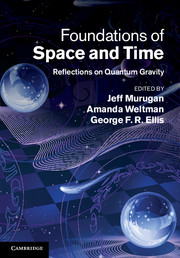Book contents
- Frontmatter
- Contents
- List of contributors
- 1 The problem with quantum gravity
- 2 A dialogue on the nature of gravity
- 3 Effective theories and modifications of gravity
- 4 The small-scale structure of spacetime
- 5 Ultraviolet divergences in supersymmetric theories
- 6 Cosmological quantum billiards
- 7 Progress in RNS string theory and pure spinors
- 8 Recent trends in superstring phenomenology
- 9 Emergent spacetime
- 10 Loop quantum gravity
- 11 Loop quantum gravity and cosmology
- 12 The microscopic dynamics of quantum space as a group field theory
- 13 Causal dynamical triangulations and the quest for quantum gravity
- 14 Proper time is stochastic time in 2D quantum gravity
- 15 Logic is to the quantum as geometry is to gravity
- 16 Causal sets: discreteness without symmetry breaking
- 17 The Big Bang, quantum gravity and black-hole information loss
- 18 Conversations in string theory
- Index
- References
5 - Ultraviolet divergences in supersymmetric theories
Published online by Cambridge University Press: 05 August 2012
- Frontmatter
- Contents
- List of contributors
- 1 The problem with quantum gravity
- 2 A dialogue on the nature of gravity
- 3 Effective theories and modifications of gravity
- 4 The small-scale structure of spacetime
- 5 Ultraviolet divergences in supersymmetric theories
- 6 Cosmological quantum billiards
- 7 Progress in RNS string theory and pure spinors
- 8 Recent trends in superstring phenomenology
- 9 Emergent spacetime
- 10 Loop quantum gravity
- 11 Loop quantum gravity and cosmology
- 12 The microscopic dynamics of quantum space as a group field theory
- 13 Causal dynamical triangulations and the quest for quantum gravity
- 14 Proper time is stochastic time in 2D quantum gravity
- 15 Logic is to the quantum as geometry is to gravity
- 16 Causal sets: discreteness without symmetry breaking
- 17 The Big Bang, quantum gravity and black-hole information loss
- 18 Conversations in string theory
- Index
- References
Summary
Recent advances in calculational techniques permit the study of ultraviolet structure in maximal super Yang–Mills and maximal supergravity theories at heretofore unattainable loop orders. Hints from string theory suggest that maximal supergravity might have a similar ultraviolet behavior in D =4 spacetime dimensions as maximal super Yang–Mills theory and so be ultraviolet convergent. However, what is known of field theoretic non-renormalization theorems suggests only that ½-BPS counterterms are excluded. A key test of the relative finiteness properties of the two theories will be the ultraviolet divergences in D=5 maximal supergravity at the four-loop level. This chapter constitutes a review of the arguments that lead to these remarkable results.
Introduction
Obtaining an acceptable quantum theory of gravity is the key remaining problem in fundamental theoretical physics. A basic difficulty in formulating such a theory was already recognized in the earliest approaches to this problem in the 1930s: the dimensional character of Newton's constant gives rise to ultraviolet divergent quantum correction integrals. Naïve power counting of the degree of divergence Δ of an L-loop diagram in D-dimensional gravity theories yields the result
Δ = (D - 2)L + 2
which grows linearly with loop order, implying the requirement for higher and higher-dimensional counterterms to renormalize the divergences. In the 1970s, this was confirmed explicitly in the first Feynman diagram calculations of the radiative corrections to systems containing gravity plus matter [51]. The time lag between the general perception of the UV divergence problem and its first concrete demonstration was due to the complexity of Feynman diagram calculations involving gravity.
- Type
- Chapter
- Information
- Foundations of Space and TimeReflections on Quantum Gravity, pp. 85 - 105Publisher: Cambridge University PressPrint publication year: 2012



